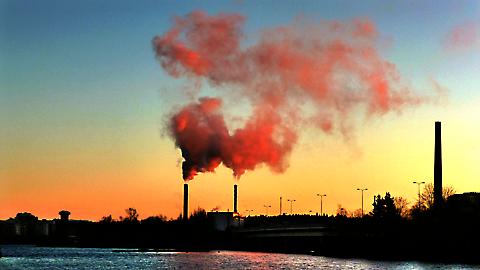Study Compares Trends in News Coverage of Energy Policy in the UK and Finland

At the journal Public Understanding of Science, a forthcoming study provides one of the first cross-national comparisons of how energy policy has been covered and debated in news coverage [abstract]. To date, a growing number of studies have offered cross-national comparisons on the trajectory of climate change coverage across countries but few studies have conducted similar large scale analyses of trends in coverage of energy policy.
From the introduction to the study of Finnish and UK coverage by University of Helsinki researcher
Technology has become an important part of climate and energy policies around the world. Undermounting pressure to mitigate climate change, international consensus has gradually developed onthe pivotal role of new, particularly renewable energy technologies in national energy systems.Connecting climate change not only to the environmental sphere but also to economic and innovationpolicies (Stern, 2006; DTI, 2007; MEE, 2008) has further highlighted the importance of technologyin all societal development. This article analyses how the strengthening technologicalorientation was discussed in British and Finnish newspaper media in 1991–2006, when climate change increasingly penetrated into international and national political discussions.
Energy technologiesare understood not only as climate and energy policy instruments but also as social constructionsthat are actively interpreted and reinterpreted in policy debates (Bijker, 1995; Barry,2001). Transformations in the ways technology-driven policy developments have been portrayedthus also reflect broader politico-ideological changes. A comparison between the UK and Finland is interesting in many respects. Both are membersof the European Union and have since the 1980s undergone significant restructuration in theenergy sector. Since the 1990s, discussions concerning energy security, efficiency and lowcarbonenergy systems have strengthened in both countries.
An emerging theme has also beennuclear new-build, which has related particularly to the decommissioning of the operating nuclearpower plants and the looming energy gap in the UK (MacKerron, 2009) and self-sufficiency andindustrial competitiveness in Finland. Yet the two countries have distinct economic productionstructures, natural resources and patterns of energy production and consumption. The UK is a globally important trading power and financial centre with a strong financial and businessservices sector. The country’s rich natural resources (oil, gas and coal) have balanced politicoeconomicuncertainties and protected it from economic crises (Helm, 2003) – the share of oil andgas in the total production of primary energy was 82.5% in 2007 (Eurostat, 2010).
Finland has aheavy-industry-dependent economic structure (especially pulp, paper and metal industries),Nordic location, low density of population and a lack of oil, gas and coal resources. In 2007,renewable energy accounted for 54.6% of the total production of primary energy and nuclearpower for 38.4%, while these figures in the UK were 2.5% and 9.4%, respectively (Eurostat,2010). Moreover, Finland’s relative dependency on energy imports (53.8% in 2007) and energyintensity have been substantially higher than in the UK (20.1%), with energy intensity approximatelytwice as high as in the UK (Eurostat, 2010).
This article scrutinises how energy technologies have become the core of national climate andenergy policies and discusses the degree to which media representations have reflected, departedfrom or reasserted their respective politico-economic contexts. Key questions include the following:How have national newspapers represented policies concerning energy technologies at differentpoints in time? How are international and national political changes reflected in the media?What kinds of differences and similarities can be found between the UK and Finland? The periodof analysis, 1991–2006, is a formative period in energy technologies’ growing public and politicalsalience. It is also concurrent with important international political events, from the United Nations Framework Convention on Climate Change (UNFCCC) (1992) to the Kyoto Protocol (1997) andseveral UN Conferences of Parties. After the publication of the Stern Review (2006) and recentEU policy developments, energy technologies have been consistently high on national politicalagendas; thus, more recent years are not covered in this article. The article discusses the newspapercoverage of energy policy in 1991–2006 and develops a periodisation of key trends. It then utilises this periodisation in the analysis of media representations and concludes with comparative reflections.





